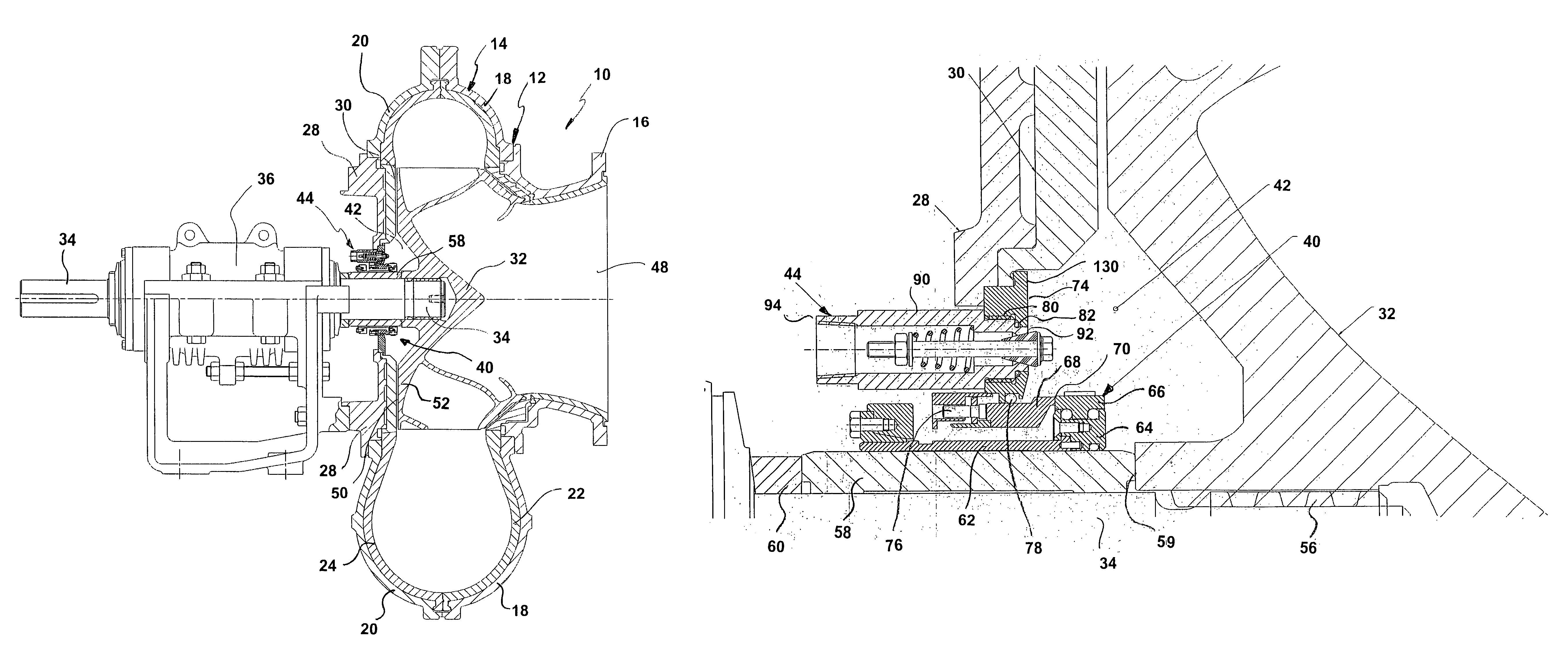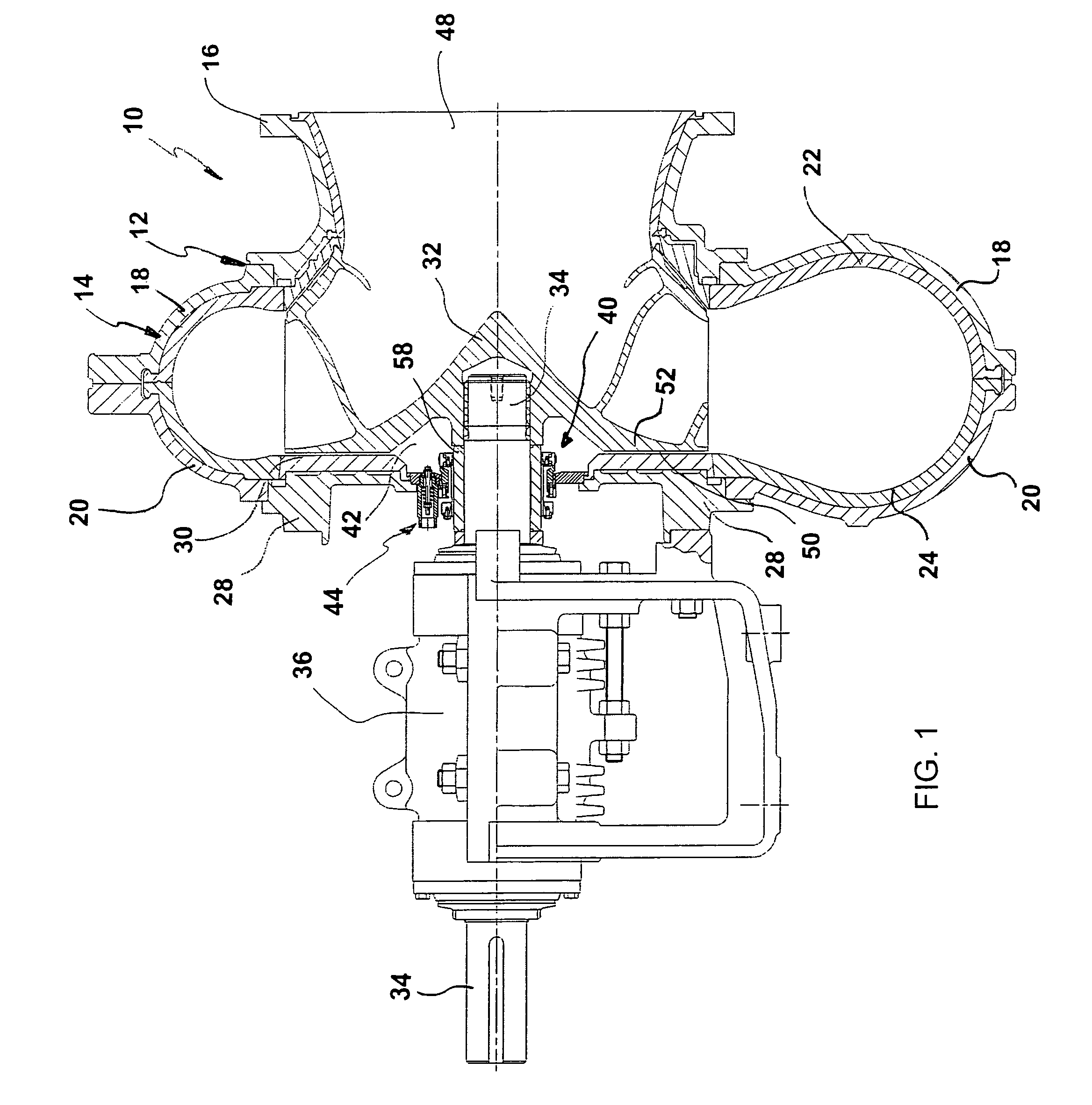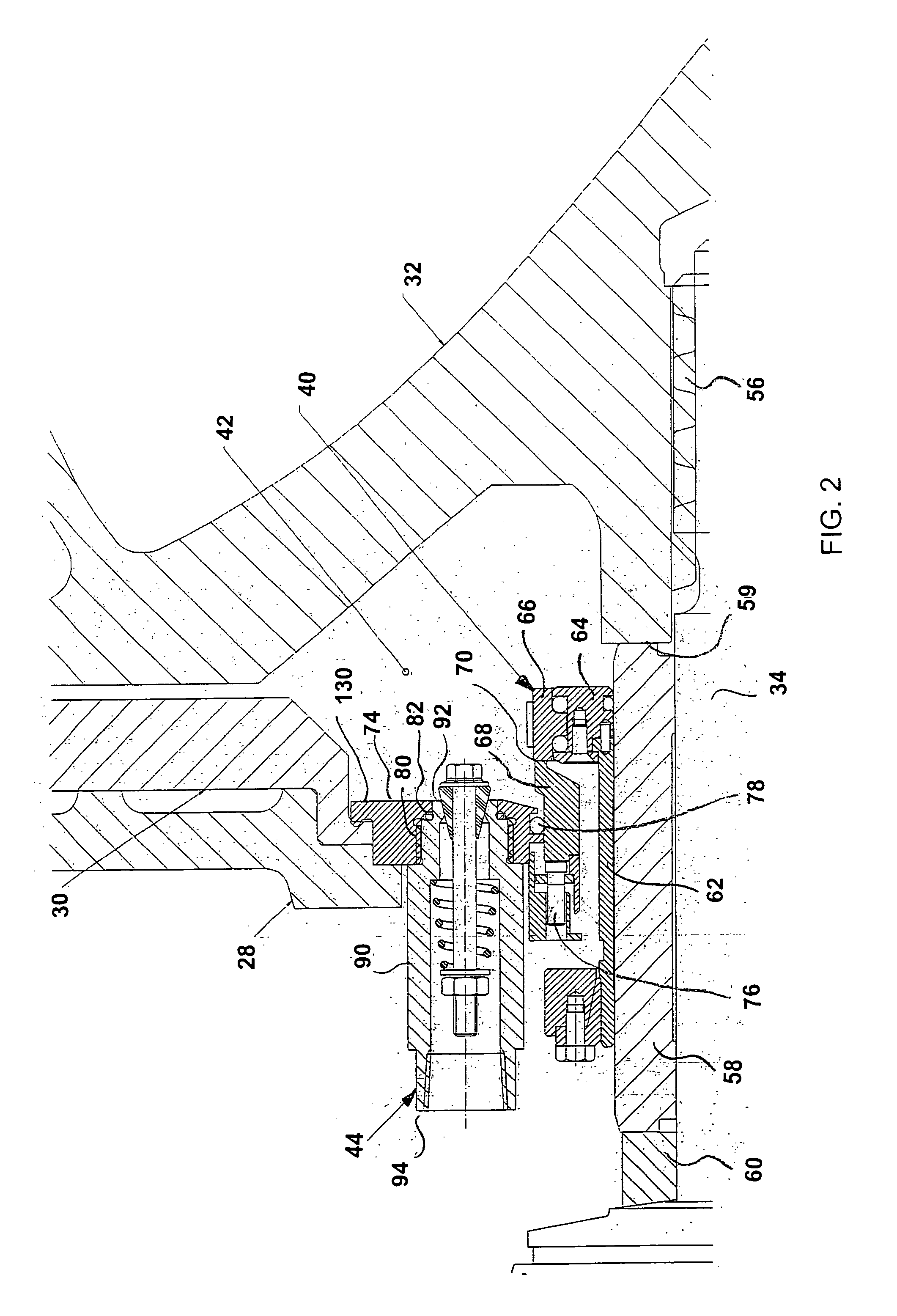Seal chamber conditioning valve for a rotodynamic pump
a technology of rotodynamic pump and sealing chamber, which is applied in the direction of machines/engines, engine starters, liquid fuel engines, etc., can solve the problems of high potential for dry running at the seal face, dry running condition, and mechanical seal wear, so as to improve the preservation and maintenance of mechanical seals
- Summary
- Abstract
- Description
- Claims
- Application Information
AI Technical Summary
Benefits of technology
Problems solved by technology
Method used
Image
Examples
Embodiment Construction
[0026]FIG. 1 illustrates, in partial cross section, a centrifugal pump 10 of the type used to process slurries. The pump 10 generally comprises a pump casing 12 which, in turn, comprises a volute casing 14 to which is attached to a suction inlet casing 16. As shown, the volute casing 14 may preferably comprise a front casing 18 and a back casing 20. In the particular embodiment of the pump 10 shown, casing liners 22, 24 are installed on the inner surface of the front casing 18 and back casing 20. The pump 10 further comprises a frame plate adaptor 28 that attaches to the back casing 20. A frame plate liner insert 30 is positioned adjacent the frame plate adaptor 28.
[0027]An impeller 32 is positioned in the pump casing 12 and is secured to a pump shaft 34 that extends through the frame plate adaptor 28. The pump shaft 34 also extends through a bearing housing 36 in which is located a set of bearings (not shown) which support the pump shaft 34. The pump shaft 34 is also keyed for atta...
PUM
 Login to View More
Login to View More Abstract
Description
Claims
Application Information
 Login to View More
Login to View More - R&D
- Intellectual Property
- Life Sciences
- Materials
- Tech Scout
- Unparalleled Data Quality
- Higher Quality Content
- 60% Fewer Hallucinations
Browse by: Latest US Patents, China's latest patents, Technical Efficacy Thesaurus, Application Domain, Technology Topic, Popular Technical Reports.
© 2025 PatSnap. All rights reserved.Legal|Privacy policy|Modern Slavery Act Transparency Statement|Sitemap|About US| Contact US: help@patsnap.com



